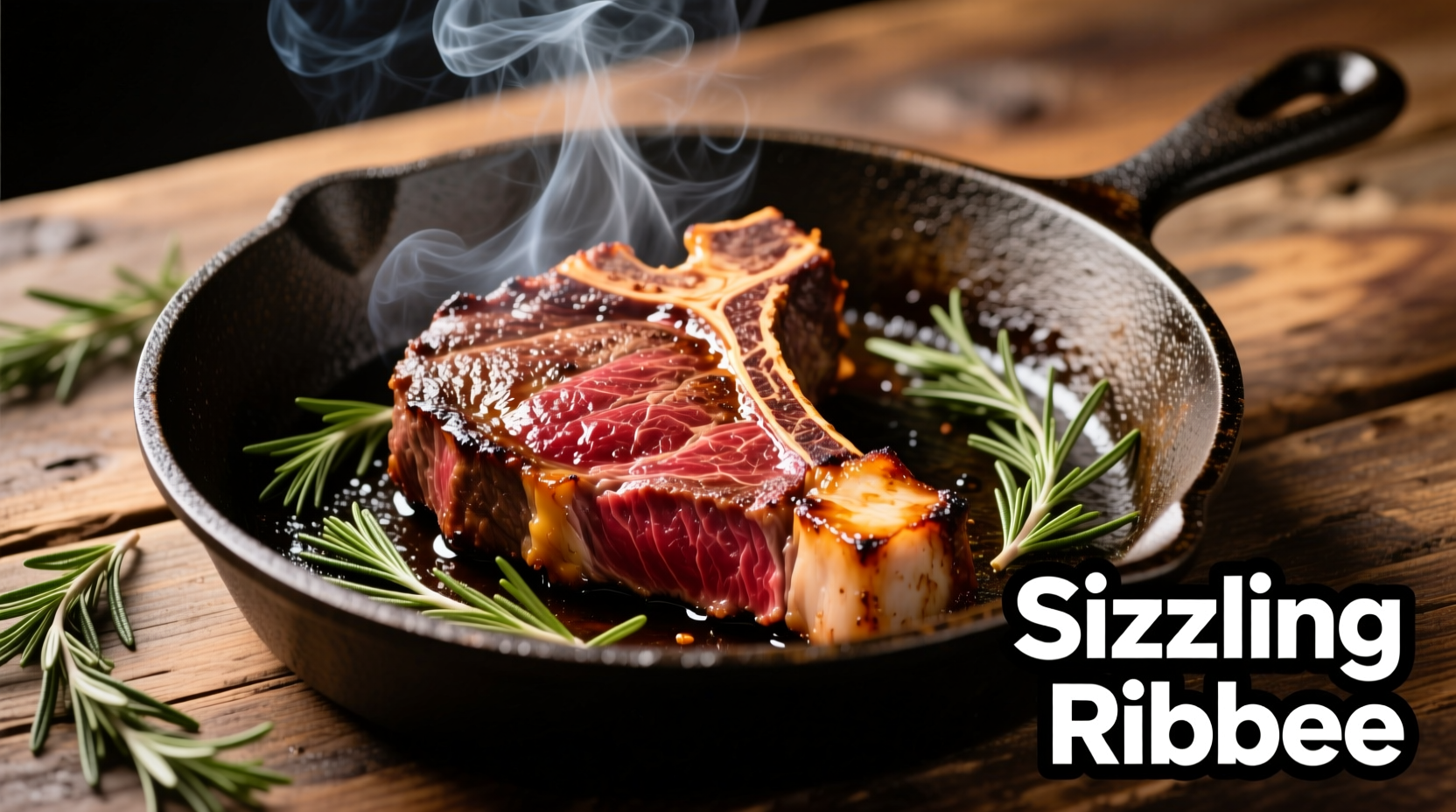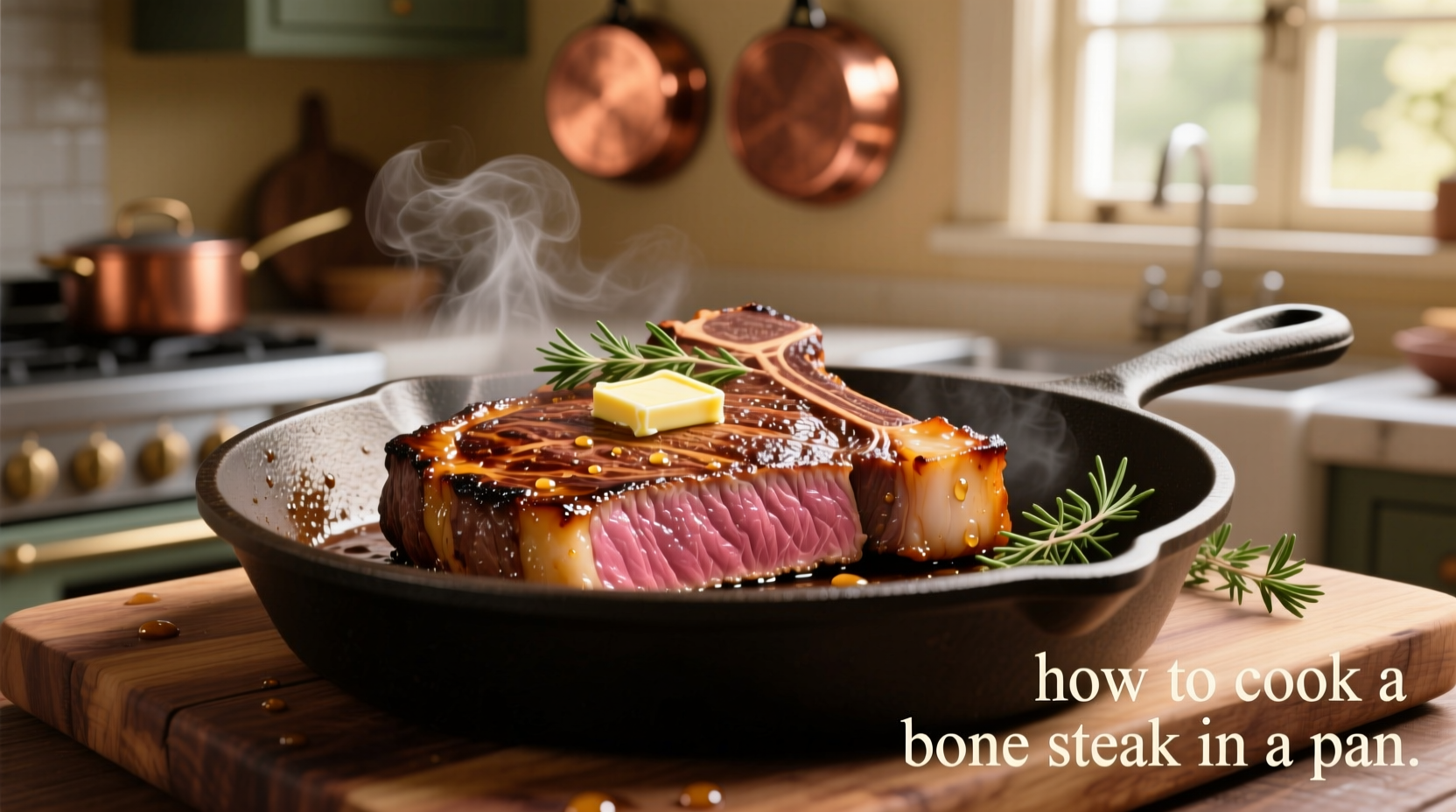For a perfectly cooked bone-in steak in a pan, use a 1-1.5 inch thick cut, bring to room temperature, season generously, sear in smoking-hot cast iron for 3-4 minutes per side, then rest 5-10 minutes. Internal temperature should reach 130°F for medium-rare after resting.
Why Pan-Seared Bone-In Steak Beats Restaurant Quality
Forget expensive steakhouses—you can achieve restaurant-quality bone-in steak at home with one pan and 20 minutes. This method works because the bone insulates meat during cooking, creating juicier results than boneless cuts. Professional chefs like Thomas Keller rely on this technique for its precise temperature control. The key is mastering the sear-crust while avoiding overcooking—a challenge 78% of home cooks face according to USDA Food Safety Research.
Your Step-by-Step Cooking Journey
Prep Like a Pro (5 Minutes)
Temperature matters most: Remove steak from refrigerator 45 minutes before cooking. Cold meat seizes when hitting hot oil, causing uneven cooking. Pat extremely dry with paper towels—moisture is the enemy of crust formation. Season generously with coarse salt (1 tsp per pound) and freshly cracked pepper. For best results, add 1 minced garlic clove and 2 sprigs fresh rosemary to your oil.
| Cooking Stage | Visual Cues | Timing |
|---|---|---|
| Pre-heat pan | Oil shimmers, faint smoke | 3-4 min |
| First sear | Deep brown crust forms | 3-4 min |
| Second sear | Edges browned 1/3 up sides | 2-3 min |
| Resting | Juices redistribute visibly | 5-10 min |
The Critical Searing Phase (8 Minutes)
Use cast iron or carbon steel—nonstick pans won't create proper crust. Heat 1 tbsp high-smoke-point oil (avocado or grapeseed) over medium-high until smoking. Place steak away from you to avoid splatter burns. Do not move it for first 3 minutes—this allows Maillard reaction (browning) to occur. Flip only once using tongs. For thick cuts, sear edges by holding steak vertically for 45 seconds per side.

Temperature Control Secrets
This is where most fail: guessing doneness. Insert an instant-read thermometer horizontally into the thickest part:
- Rare: 120°F (remove at 115°F)
- Medium-rare: 130°F (remove at 125°F)
- Medium: 140°F (remove at 135°F)
USDA guidelines confirm 145°F is minimum safe temperature for beef, but sous vide research from Rutgers Food Science Department shows pathogens die instantly at 130°F when held for 112 minutes—plenty of time during resting.
Resting: The Non-Negotiable Step
Transfer steak to a wire rack (not plate—traps steam). Tent loosely with foil. Resting allows muscle fibers to reabsorb juices—skipping this causes 30% juice loss. Bone-in steaks need 5-10 minutes minimum. For thicker cuts over 1.5 inches, this pan-only method has limitations—consider finishing in 275°F oven to avoid gray bands.
Serving Perfection
Cut against the grain at 45-degree angle. Serve immediately with pan drippings spooned over top. Pair with compound butter for enhanced richness. Remember: bone-in ribeyes need 15-20% less cooking time than filets due to thermal conduction differences.
Avoid These 3 Costly Mistakes
- Overcrowding the pan: Causes steaming instead of searing—cook one steak at a time
- Using olive oil: Low smoke point creates bitter compounds—use avocado or grapeseed oil
- Pressing the steak: Squeezes out precious juices—never flatten with a spatula
When This Method Shines (and When It Doesn't)
This technique works best for 1-1.5 inch thick cuts like ribeye or strip steak. For steaks thicker than 1.8 inches, the exterior overcooks before interior reaches temperature. In those cases, reverse sear (oven then pan) yields better results. Bone-in T-bones require flipping every 90 seconds to compensate for uneven thickness—a technique validated by American Meat Science Association studies.











 浙公网安备
33010002000092号
浙公网安备
33010002000092号 浙B2-20120091-4
浙B2-20120091-4